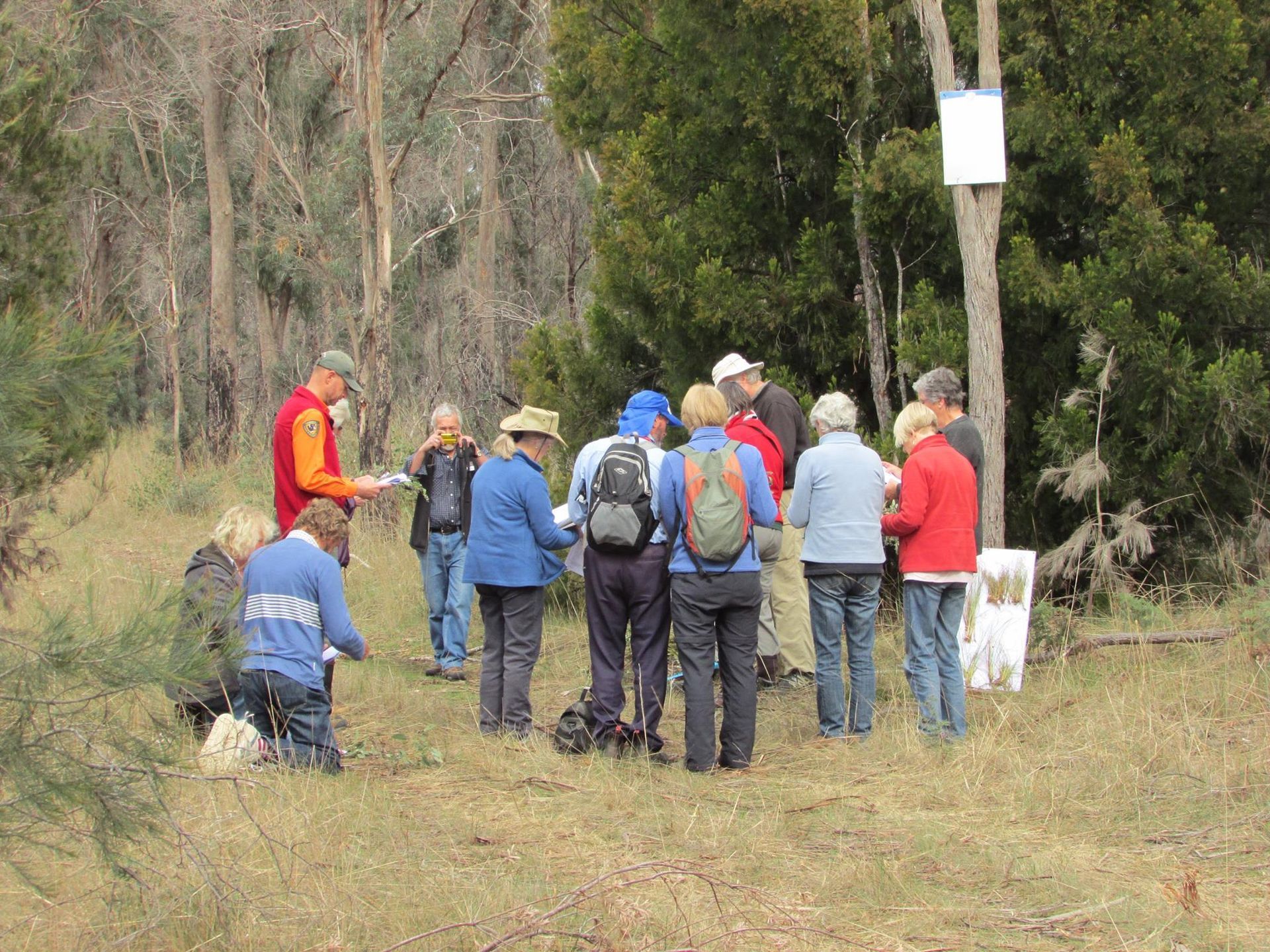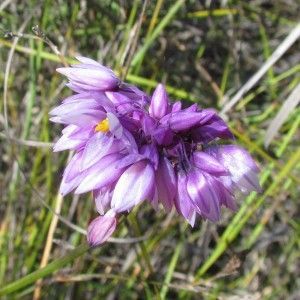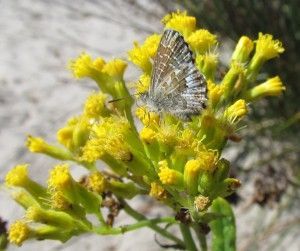Our research & conservation projects in Tasmania
RESEARCH PROJECTS
ECOtas undertakes several self-funded research projects and collaborates with other organisations throughout Tasmania, such as the Forest Practices Authority, the University of Tasmania, the Tasmanian Herbarium, the Threatened Species Section (NRE Tas), and even international universities.
The main focus of our research is the ecology, distribution, habitat characteristics and conservation management requirements of threatened plant species and the potential impacts of forestry practices on conservation values (especially hollow-dependent fauna). Mark’s life-long interest in Tasmanian native orchids is reflected in a number of research directions.
Some examples of our research projects are described below. Please contact Mark Wapstra if you want to know more about any of these (or other) projects.


Distribution, habitat characteristics and conservation status of the purple rushlily Sowerbaea juncea in Tasmania
This was an ECOtas-funded project undertaken by Mark Wapstra.
Sowerbaea juncea is known from southeastern Australia but, in Tasmania until 2006, was represented by less than 5 collections, all from the Ansons Bay-Gladstone area in the northeast. The species was listed as rare on the Tasmanian
Threatened Species Protection Act 1995 at the start of the project but has since been uplisted to vulnerable. ECOtas examined herbarium collections and database information, undertook extension surveys and compiled information on the ecology of the species. We found the species in several more locations (mainly on private land), that it can be locally plentiful and that it may tolerate quite high levels of disturbance (e.g. from cattle grazing and fire). However, the extensive historical land clearing in north-eastern Tasmania, especially in the near-coastal zone, has probably led to a drastic decline in the range of the species.
As with many of our threatened plants, unmanaged reservation may not be the key to maintaining viable populations. Sowerbaea juncea appears to be favoured by relatively high levels of disturbance, such as cattle grazing and low-intensity burning, which seems to provide the ideal open habitat.
The results of this work were published in the Tasmanian Museum & Art Gallery’s scientific journal,
Kanunnah.
Wapstra, M. (2011). Sowerbaea juncea Andrews (Laxmannniaceae), purple rushlily: distribution, habitat characteristics and conservation management in Tasmania. Kanunnah 4: 59-71. [pdf – purple rushlily]
Classification, ecology and conservation of Tasmanian Senecio (Asteraceae): native fireweeds and groundsels
The genus Senecio has recently been subject to a major taxonomic overhaul, which resulted in an almost doubling of the number of recognised taxa. Several are listed as threatened already, and some of the “new” species may qualify for listing (this has already occurred for S. georgianus and S. psilocarpus). In trying to get a handle on the group, I became fascinated by them and a key for Tasmanian species was constructed (see citation below).
I am happy to receive specimens of Senecio from environmental consultants, naturalists and other professionals for identification. This is a free plant identification service (for Senecio only) and will include note-form written confirmation of identifications and appropriate curation of specimens for submission to the Tasmanian Herbarium (where appropriate).

Note that successful identification of some species requires carefully collected specimens that include the root system (for the disciform species, i.e. those without the typical “daisy” flowerhead) and the lower to middle portion of the stem and leaves (and obviously flowers). Sometimes a collection of several specimens from the one site is useful for identification purposes.
Fresh specimens can be wrapped in moist (not wet) paper towel and/or moss and refrigerated for several days to maintain the freshness of radiate flowerheads (i.e. the showy “daisy” type) and shape of leaves. If prompt identification cannot be undertaken, light pressing in newspaper (with larger flowers and fleshier leaves wrapped gently in additional paper towel) will usually result in specimens that can be easily identified. Any collected material should be accompanied by the following minimum information: height of specimen(s), location (13-figure grid reference with datum noted and/or latitude/longitude), site name, collection date, habitat information (e.g. vegetation type, altitude, geology, disturbance history) and who collected the specimen.
Further reading on Tasmanian Senecio (Asteraceae): native fireweeds and groundsels
Wapstra, M., Thompson, I.R. & Buchanan, A.M. (2008). An illustrated and annotated key to the Tasmanian species of Senecio and allied taxa (Asteraceae). Kanunnah 3: 49-90. [download PDF]
Wapstra, M. (2012). Comments on the conservation status of Senecio velleioides (forest groundsel) in Tasmania. The Tasmanian Naturalist 134: 27-31. [pdf – forest groundsel]
Wapstra, M. (2011). Collecting history, distribution, habitat and conservation status of Senecio campylocarpus (bulging fireweed) in Tasmania. The Tasmanian Naturalist 133: 68-73. [pdf – bulging fireweed]
Wapstra, M. (2010). Collection history of Senecio psilocarpus (swamp fireweed) in Tasmania. The Tasmanian Naturalist 132: 2-8. [pdf – swamp fireweed]
Wapstra, M. (2010). The status of Senecio georgianus (grey fireweed) in Tasmania. The Tasmanian Naturalist 132: 9-14. [pdf – grey fireweed]

Distribution, habitat characteristics, ecology and conservation management of Thismia rodwayi (fairy lanterns) in Tasmania
Thismia rodwayi is perhaps one of Tasmania’s most fascinating plants. It is aptly named the ‘fairy lanterns’ because of its bright orange-red colour and unique flower structure.
My fascination with this beautiful little plant began in late 2002 while still working at the Forest Practices Authority, when the species was inadvertently discovered in a forestry coupe proposed for selective logging. This began a series of surveys for the species around the State, culminating in a report and a scientific paper. My fascination with the species has continued and I am interested in hearing from anybody who may have information on the species.
ECOtas
is available to undertake formal surveys for this species for proposed forestry operations, commercial developments and other activities (consultancies undertaken for this species will be undertaken at a 20% discount on my current rates, on the understanding that site data (positive and negative) can be used for personal research).
Further reading on Thismia rodwayi
Merckx, V.S.F.T. & Wapstra, M. (2013). Further notes on the occurrence of fairy lanterns Thismia rodwayi F.Muell. (Thismiaceae) in Tasmania: vegetation associations. The Tasmanian Naturalist 135: 71-78. [pdf – fairy lanterns veg]
Wapstra, M. & Chuter, A. (2013). An update on the distribution, reservation and conservation status of fairy lanterns Thismia rodwayi F.Muell. (Thismiaceae) in Tasmania. The Tasmanian Naturalist 135: 79-89. [pdf – fairy lanterns conservation]
Wapstra, M. & Merckx, VSFT (2014). 16 Burmanniaceae, version 2014:1. IN: M.F. Duretto (Ed.) Flora of Tasmania Online. Tasmanian Herbarium, Tasmanian Museum & Art Gallery, Hobart. www.tmag.tas.gov.au/floratasmania
Roberts, N., Duncan, F., Wapstra, M. & Woolley, A. (2003). Distribution, Habitat Characteristics and Conservation Status of Thismia rodwayi F. Muell. in Tasmania. A Report to Forestry Tasmania Conservation Planning Branch and the Forest Practices Board. [download pdf]
Roberts, N., Wapstra, M., Duncan, F., Woolley, A., Morley, J. & Fitzgerald, N. (2003). Shedding some light on Thismia rodwayi F. Muell. (fairy lanterns) in Tasmania: distribution, habitat and conservation status. Papers and Proceedings of the Royal Society of Tasmania 137: 55-66. [download pdf]
Wapstra, M., Woolley, A., Duncan, F. and Roberts, F. (2004). A bright light on our forest floor – Thismia rodwayi (fairy lanterns). Forest Practices News 5(4): 10-12. [download pdf]
Wapstra, M., French, B., Davies, N., O’Reilly-Wapstra, J. & Peters, D. (2005). A bright light of the dark forest floor: observations of the fairy lanterns Thismia rodwayi F. Muell. (Burmanniaceae) in Tasmanian forests. The Tasmanian Naturalist 127: 2-18. [download pdf]
Wapstra, M., Roberts, N., Duncan, F. & Woolley, A. (2005). Illuminating the Dark of the Forest Floor: Managing ‘Fairy Lanterns’ in Wood Production Forests in Tasmania. Poster presented at the Advances in Plant Conservation Biology – Implications for Flora Management and Restoration Symposium, 25-27 October 2005, Perth, Western Australia. [download pdf]
To learn more about our current or ongoing research products, get in touch with our team today.
